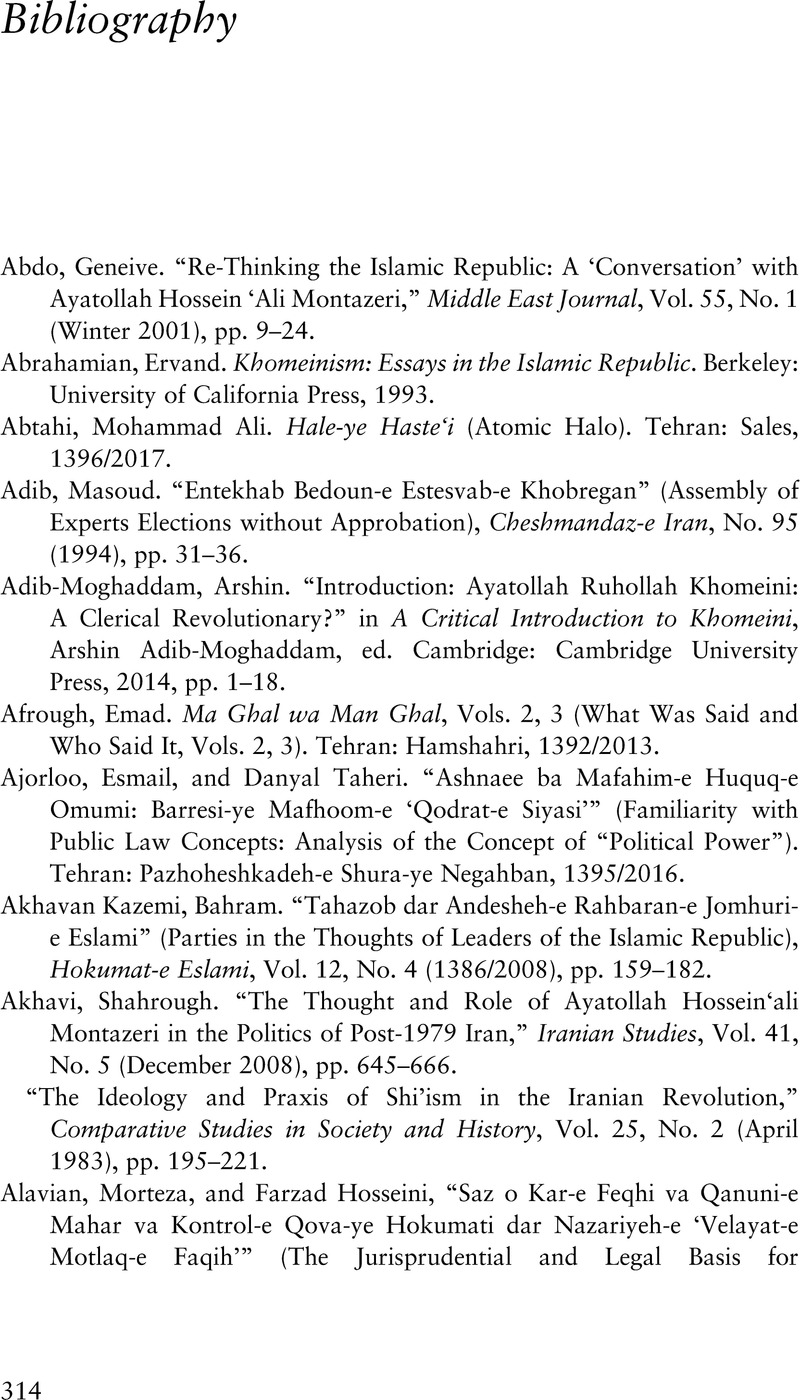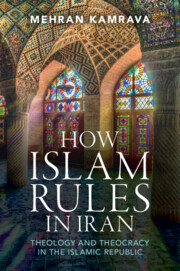Book contents
- How Islam Rules in Iran
- How Islam Rules in Iran
- Copyright page
- Contents
- Preface
- 1 Introduction
- 2 The Setting
- 3 A Question of Jurisprudence
- 4 Social Protection and Guidance
- 5 Rethinking the Islamic Republic
- 6 Theorizing Islamic Democracy
- 7 Legitimate Authority
- 8 Khameneism and the Absolute Velayat-e Faqih
- 9 Whither the Islamic Republic?
- Appendix Brief Biography of Some of the Figures Discussed
- Glossary
- Bibliography
- Index
- References
Bibliography
Published online by Cambridge University Press: 02 May 2024
- How Islam Rules in Iran
- How Islam Rules in Iran
- Copyright page
- Contents
- Preface
- 1 Introduction
- 2 The Setting
- 3 A Question of Jurisprudence
- 4 Social Protection and Guidance
- 5 Rethinking the Islamic Republic
- 6 Theorizing Islamic Democracy
- 7 Legitimate Authority
- 8 Khameneism and the Absolute Velayat-e Faqih
- 9 Whither the Islamic Republic?
- Appendix Brief Biography of Some of the Figures Discussed
- Glossary
- Bibliography
- Index
- References
Summary

- Type
- Chapter
- Information
- How Islam Rules in IranTheology and Theocracy in the Islamic Republic, pp. 314 - 334Publisher: Cambridge University PressPrint publication year: 2024



